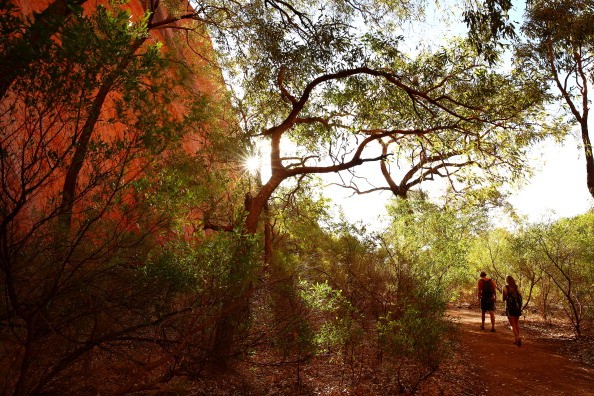Photo-Toxic Plants Towering Toronto Parks
| KJ Belonio | | Jun 27, 2015 10:06 PM EDT |
(Photo : Getty Images/Mark Kolbe) Photo-toxic plants such as Wild Parsnip and its native cousin, the Cow Parsnip, have been found towering Toronto parks. These potentially hazardous plants can cause photodermatitis, a reaction that causes the affected skin to become hyper-sensitive to sunlight.
Recently, photo-toxic plants such as Wild Parsnip and its native cousin, the Cow Parsnip, have been found towering Toronto parks. These invasive plants may be nice to look at, but be extra careful not to touch them.
These potentially hazardous plants have been popping up along park trails in Toronto. And now, the Toronto and Region Conservation Authority is in the process of removing dozens of Cow Parsnip plants, which look extremely similar to an invasive plant known as the Giant Hogweed.
Like Us on Facebook
Unlike Hogweed, Cow Parsnip is native, so it doesn't threaten the ecological balance, which is a critical difference for conservation authorities who are responsible for the preservation in parks. However, Global News revealed the distinction is less significant to individuals and pets who come into contact with the plants.
These severely toxic plants, such as the Giant Hogweed, Wild Parsnip and Cow Parsnip, are actually dangerous especially when their clear and watery sap, which contains the chemicals called furanocoumarins, touches the human skin. According to Torontoist, the sap can cause photodermatitis, a reaction that causes the affected skin to become hyper-sensitive to sunlight.
When furanocoumarins get absorbed by the skin and the affected part is exposed to the sun's ultraviolet rays, it causes a breakdown of cells and skin tissue and creates a burning feeling that can last for a day or so. Depending on its severity, the exposed skin can turn red and blister. Sometimes, the scars and discoloration can last for years, The Star noted.
Moreover, if the juice gets into the eye, it can result to temporary or permanent blindness. While the blisters can last for up to a few months and skin can remain sensitive to sunlight for up to a year. Toronto Region Conservation Authority associate director of restoration Gord MacPherson described the plants as "poison ivy on steroids."
Aside from its hazardous effects on humans, these photo-toxic plants can also cause harm to animals like dogs. If they're nosing around the bushes, it's possible they could pick up some of the plant juice. And when the sap gets on their fur, the results to them will be unpleasant because of its toxicity.
"The important thing you want to remember is both plants cause photo toxicity so you don't want to get any of the sap on your skin," Toronto and Region Conservation Authority project manager Karen McDonald said.
The sap of Cow Parsnip has a comparable but a little less toxic effect than Wild Parsnip, which is native to Europe and Asia. Meanwhile, park goers think it's best for authorities to put up some signs warning people not to touch these plants.
TagsCow Parsnip, Hogweed, Toxic Plants, Science
©2015 Chinatopix All rights reserved. Do not reproduce without permission
EDITOR'S PICKS
-

Did the Trump administration just announce plans for a trade war with ‘hostile’ China and Russia?
-

US Senate passes Taiwan travel bill slammed by China
-

As Yan Sihong’s family grieves, here are other Chinese students who went missing abroad. Some have never been found
-

Beijing blasts Western critics who ‘smear China’ with the term sharp power
-

China Envoy Seeks to Defuse Tensions With U.S. as a Trade War Brews
-

Singapore's Deputy PM Provides Bitcoin Vote of Confidence Amid China's Blanket Bans
-

China warns investors over risks in overseas virtual currency trading
-

Chinese government most trustworthy: survey
-

Kashima Antlers On Course For Back-To-Back Titles
MOST POPULAR
LATEST NEWS
Zhou Yongkang: China's Former Security Chief Sentenced to Life in Prison

China's former Chief of the Ministry of Public Security, Zhou Yongkang, has been given a life sentence after he was found guilty of abusing his office, bribery and deliberately ... Full Article
TRENDING STORY

China Pork Prices Expected to Stabilize As The Supplies Recover

Elephone P9000 Smartphone is now on Sale on Amazon India

There's a Big Chance Cliffhangers Won't Still Be Resolved When Grey's Anatomy Season 13 Returns

Supreme Court Ruled on Samsung vs Apple Dispute for Patent Infringement

Microsoft Surface Pro 5 Rumors and Release Date: What is the Latest?










